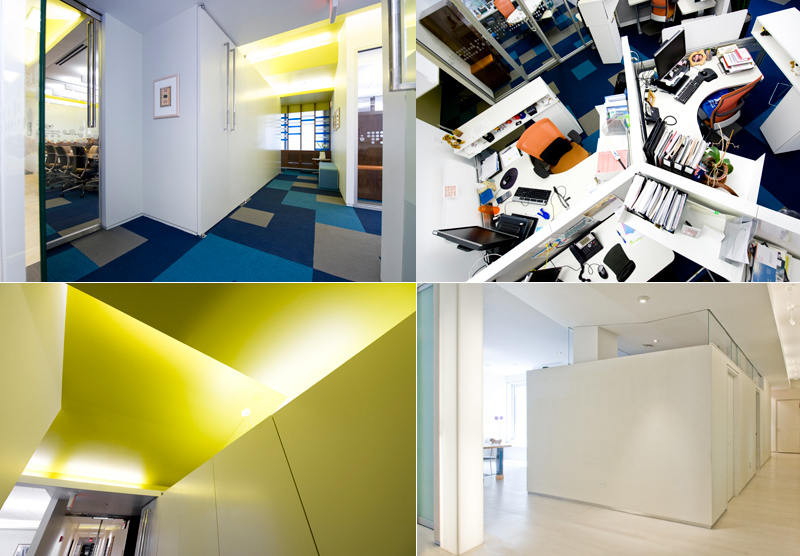
This interior office renovation seeks to break the customary linear, orthogonal office organization with the innovative rethinking of standard components while reinforcing the client’s mission of promoting openness and exchange. The typical interior corridor is virtually extended through the tenant space, differentiating conference and office zones, culminating in a translucent lens at the exterior window wall mapping Austrade’s global network, announcing their presence to neighbors both within the building and without. The renovation increases the existing space by one-third; consequently a major goal was to maximize ceiling height to expand and alleviate the space, particularly the primary conference room which was required to be completely interior for fine-tuned video-conferencing control. The existing base building infrastructure was meticulously mapped and a new undulating ceiling surface inserted providing maximum height and variation. Up-lighting in a continuous cove along the sloped surfaces increases the perception of height and expansiveness. The particular Video Conference requirements presented another opportunity for innovation; the need for a large identifiable graphic of the host city took the form of a 30 foot, full-height wraparound image of Washington DC’s Tidal Basin. This graphic creates flow between the conference rooms and break-out room, stretching the spatial and social boundaries of each. Impromptu and increased communications are crucial motivations to rethinking the open office area where standard systems furnishings have been reworked into distinctive ‘pinwheel’ pods. These new user-adjustable workstations foster ad-hock teaming sessions with bar-height surfaces and marker board skins while still maintaining a measure of visual and acoustic privacy for individual workers. The building’s standard 2 x 4 lighting grid is replaced with dual up-light / down-light pendant fixtures whose components are circuited separately. The up-light components operate on a programmable dimming daylight ‘harvesting’ system which adjusts ambient light levels in response to a light-level monitor supplementing natural daylight with energy-efficient fluorescent light only as needed. The dimmable down-light component is controlled by the individual user allowing fine control of lighting as tasks require.
via























